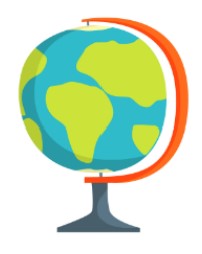At Elmstead Primary School, our aim is to inspire curiosity and fascination about the world and its people; to promote the children’s interest and understanding of diverse places, people, resources and natural and human environments, together with a deep understanding of the Earth’s key physical and human processes. Geographical knowledge and skills are built through a progressive curriculum, securing prior knowledge and expanding their
Geography is taught through the four strands of the National Curriculum:
- Locational Knowledge
- Place Knowledge
- Human and Physical Geography
- Geographical Skills and Fieldwork
Locational knowledge is where the children build the understanding of their locality and the United Kingdom, moving into Europe and finishing off with North and South America. This strand allows children to develop a greater understanding of the world and their place in it.
Place knowledge involves the comparison of human and physical features of different cities, regions and countries across the world. When learning about other countries, children will learn about the similarities and differences and how to respect each other. They will be able to discuss their findings and address stereotypes and misconceptions about places around the world.
Human and physical geography explores the characteristics of a range of the world’s most significant features including volcanoes and earthquakes, rivers, land use and settlements. Throughout this strand, geographical vocabulary is an important factor to understand and explain how these processes occur.
Geographical skills and fieldwork provides real life experiences for children to participate in practical learning. Our aim is to conduct termly fieldwork in the school grounds and the surrounding environment. During these opportunities, the children become more familiar with Ordnance Survey maps as well as build the skills to observe, measure and record the human and physical features in the local area through sketch maps, plans and digital technologies.
In addition, we aim to enrich our curriculum beyond geography lessons. Earth Day is an annual worldwide celebration day on the 22nd April and we are looking forward to participating in the celebrations this year.



